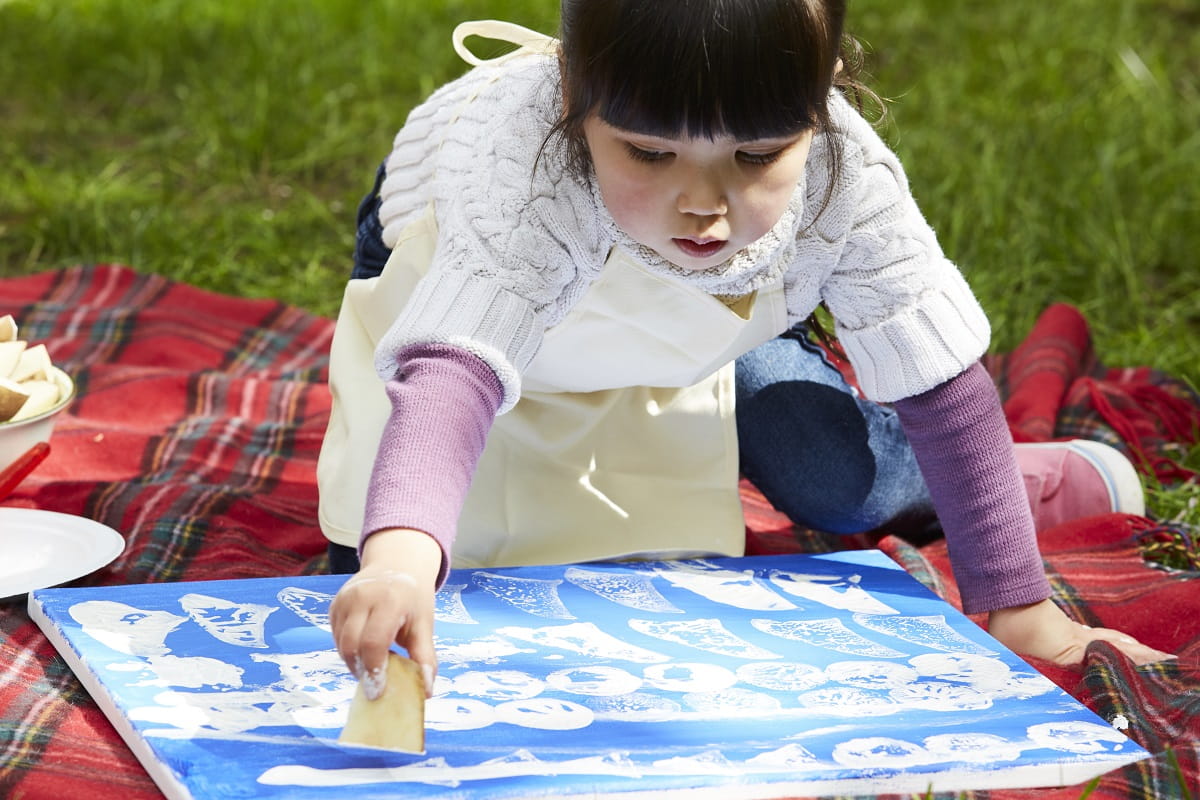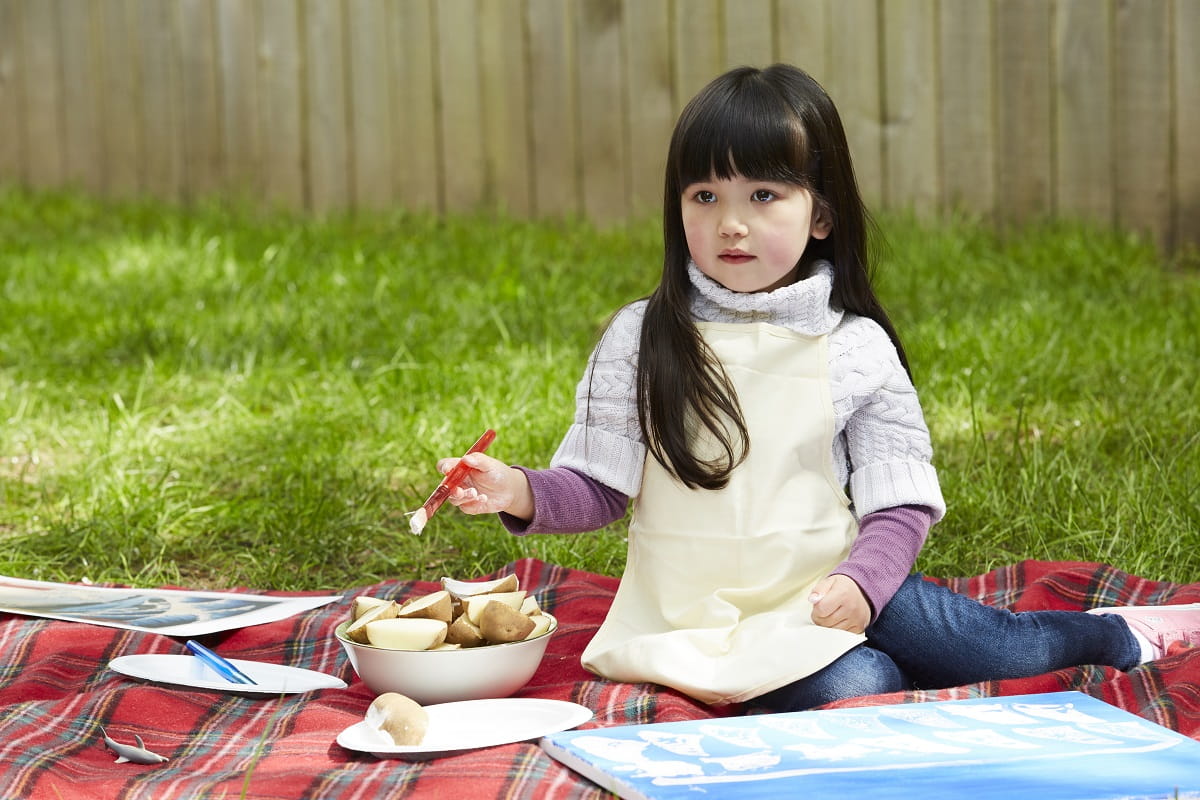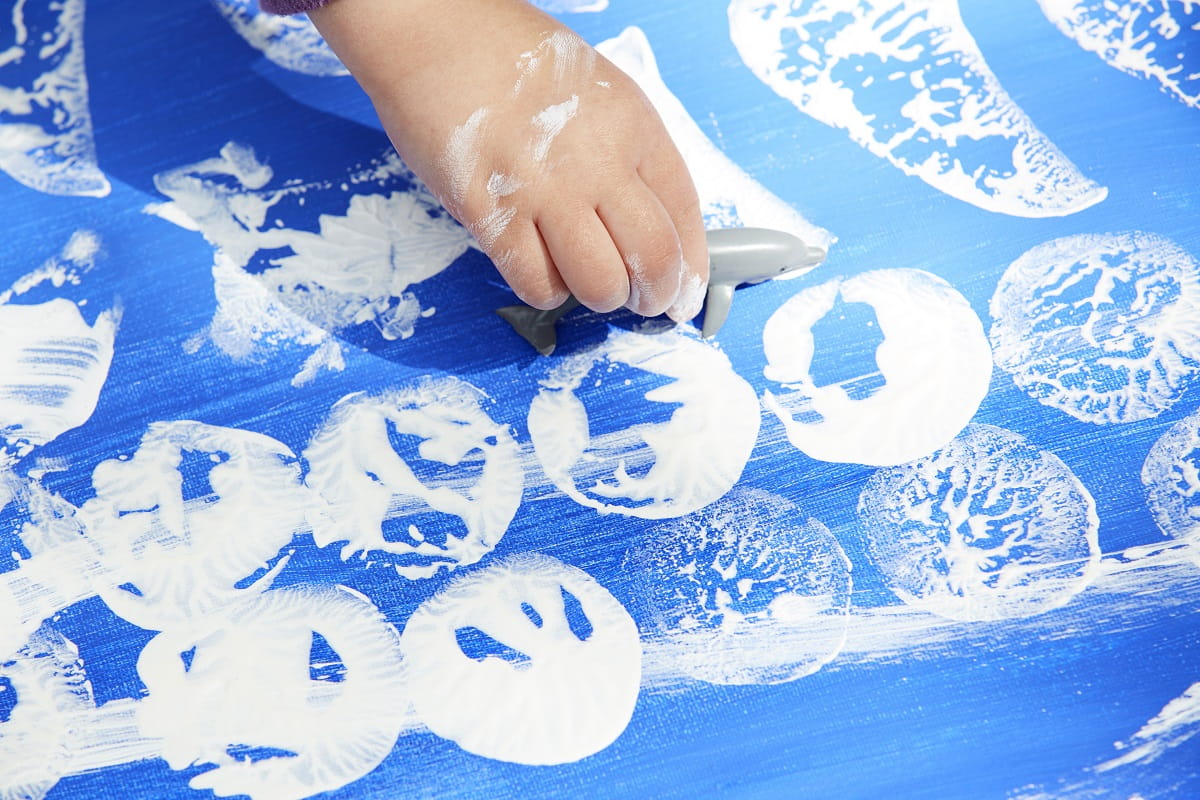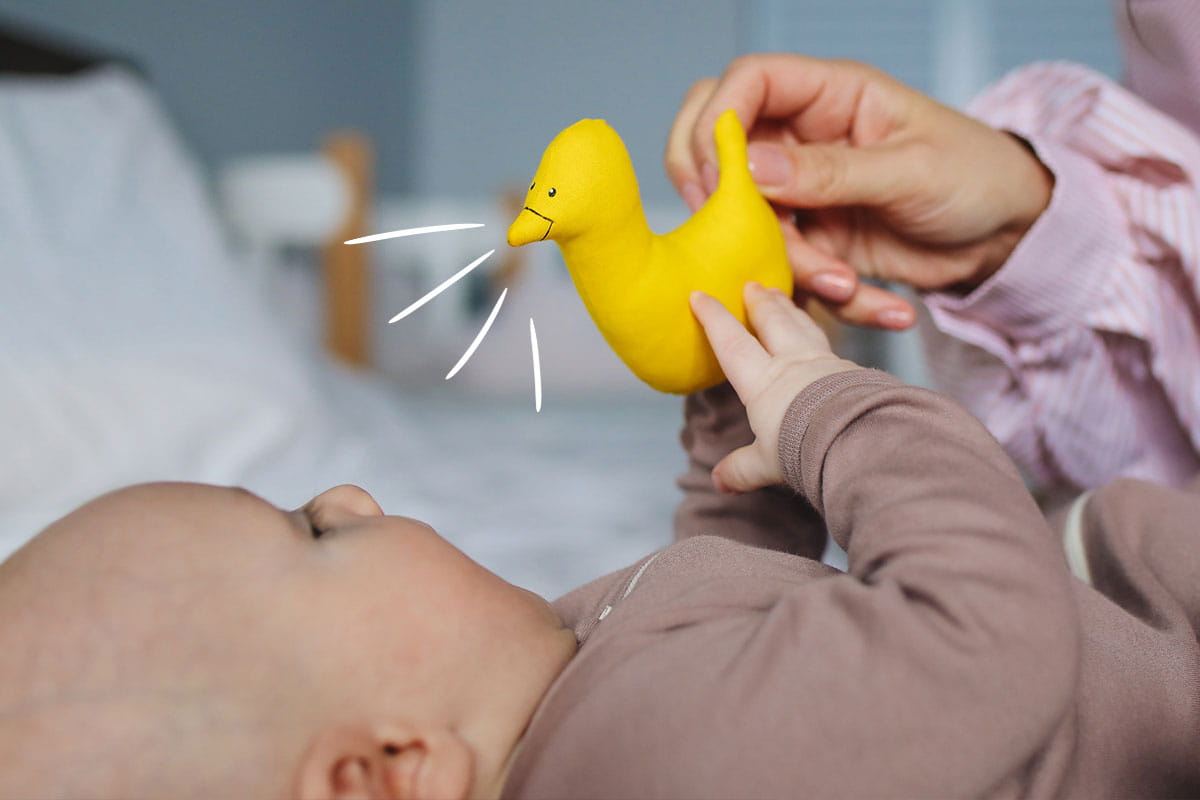Mini Master Class: Potato-Stamp Art Inspired by Japanese Prints

This month, KinderCare Pre-Kers are studying Utagawa Hiroshige’s 19th-century woodblock print The Sea at Satta in Suruga Province—and then using potato stamps to create their own beautiful prints. Hiroshige’s woodblock print masterpiece captures the beauty and power of the ocean and is an incredible example of what we can create when we work together, his print required collaboration between an artist, a woodcarver, a printer, and a publisher.
Sure, Pre-K potato printmaking is simpler than a woodblock print created by a master of the form, but this activity—inspired by our fine arts curriculum—teaches great lessons in shapes and color, collaboration, and hands-on learning, so break out the spuds! Let your kiddo be the artistic visionary and call the shots while you take on the role of potato carver. It’ll require patience and teamwork, but the end result will be worth it.
Start with a wash of color.
Set your child up for creative success with a canvas or sturdy piece of paper painted with a wash of blue tempera paint to mimic the cool look of water (or use any color that calls to your child). Let your canvas dry while you carve your potato. If you’re short on time, use a large piece of blue construction or wrapping paper instead—the finished results will make unique gift wrap!

Make your prints—and explore shapes!
Ask your child what shapes she would like in her print. (Here’s a few quick tips: cut your potato in half to make a circle, cut it in half again for a semi-circle, and cut it into quarters to make a lovely triangle shape—perfect for sails on boats or the peaks of waves. Don’t be afraid to experiment with carving a few more intricate shapes to make rolling waves or twinkling stars!) Have your child draw the shape she’d like on a piece of paper, then carve the potato for her. While you carve, go ahead and share a bit of history by explaining that this back-and-forth process mirrors how woodprint artists worked closely with carvers to create beautiful works of art.
Get out the cookie cutters.
Potatoes are soft enough to press metal cookie cutters into, so get inspired by the simple shapes of your baking tools. Find a cookie cutter smaller than the cross-section of your potato, then press it into the potato flesh and leave it there while you use a paring knife to cut out a slice of the potato from around the cookie cutter.
Think sweet.
Want to make a larger print? Look no further than a sweet potato to super-size your child’s creative space.
Paint with white to mimic waves.
Printing with potatoes dipped in white tempera paint calls to mind the cool, calming ocean and creates a unified look on the canvas or easel, no matter what shapes your child wants to make.

One block, many prints.
The beauty of woodblock (and “potato-block”) printing is that artists are able to replicate their work many times by applying paint to an object and pressing it onto paper. Woodblock reproductions can vary according to the color, type, and quantity of paint or ink that is used for each print—meaning there’s no limit to creativity! Show your child how the same potato stamp can be used again and again in many ways with different colors.
No potatoes on hand?
No problem! Explore making prints with other natural objects, like leaves or apples.
Connect your potato prints with the woodblock printing tradition.
If your child shows interest, watch this video together to see how Japanese woodblock artists create a multi-layered print.




